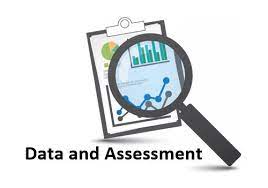Week 9 NRNP Discussion: Prescribing for Older Adults and Pregnant Women
Perinatal and Post-Partum Depression Comprehensive Nursing Paper Example
While it has traditionally been believed that pregnancy is a period of mental health, new research indicates that as many as 20% of pregnant women experience anxiety or depression (MGH Center for Women’s Mental Health, 2022). Women who have previously had mental illness and stopped taking psychotropic drugs while pregnant are especially at risk. In a recent study, a group of pregnant women with a history of serious depression were prospectively monitored throughout the pregnancy. Out of the 82 women who continued their antidepressant treatment, 21 (26%) experienced a recurrence of their depression, compared to 44 (68%) of the 65 women who stopped taking their medication (MGH Center for Women’s Mental Health, 2022). According to this study, women who stopped taking their medications had a five times higher chance of relapsing than those who continued their treatment.(Perinatal and Post-Partum Depression Comprehensive Nursing Paper Example)

Numerous unfavorable pregnancy outcomes have been linked to depression while pregnant. Pregnant women with mental health disorders are more likely to use alcohol, tobacco, and other substances known to negatively impact pregnancy outcomes, and they are also less likely to obtain appropriate prenatal care. Low birth weight and fetal development retardation in children born to depressed moms have been reported in a number of research works (MGH Center for Women’s Mental Health, 2022). Another possible pregnancy complication for women who are experiencing distress during their pregnancy is a premature delivery. There have also been reports of pregnancy complications linked to maternal depression in the latter stages of pregnancy (MGH Center for Women’s Mental Health, 2022). These complications include a higher risk of pre-eclampsia, operative delivery, and infant admission to a special care nursery for a range of conditions such as low blood sugar, prematurity, and breathing difficulties.(Perinatal and Post-Partum Depression Comprehensive Nursing Paper Example)
Treating Depression in Pregnant Women
Risk Assessment
Prescribing in pregnant women is high-risk because of adverse events like congenital malformations that result from exposure to specific medications and chemicals during pregnancy, although taking medication among pregnant women is common. Risk assessment is recommended to determine potential effects of specific drugs during pregnancy (Mulder et al., 2019). The risk assessment would involve monitoring physiological changes in pregnancy like increased body water, altering drug distribution, increased cardiac output, metabolism, fat stores, and glomerular filtration that lead to reduced drug concentration. This assessment would help guide correct dosing for sufficient therapeutic response. The risk assessment would also involve monitoring for placenta transfer, determining the teratogenicity of a rug, and timing exposure.(Perinatal and Post-Partum Depression Comprehensive Nursing Paper Example)
FDA-Approved Drug
Zuranolone (Zurzuvae) is an FDA-approved drug for treating depression among pregnant women. This is a two-week daily dose of 50mg taken with fatty foods that has proven effective in reducing depressive symptoms (Deligiannidis et al., 2023). However, despite proven efficacy, the drug can be potentially harmful to the fetus. Patients can also experience adverse reactions like reduced ability to drive or engage in other risky tasks, experiencing somnolence and confusion, and the potential for increased suicidal thoughts and behaviors. Patients can also experience dizziness, fatigue, diarrhea, urinary tract infections, and drowsiness.(Perinatal and Post-Partum Depression Comprehensive Nursing Paper Example)
Non-FDA-Approved Drug
Lithium is FDA-approved for treating bipolar disorder but can be used as an off-label drug for treating depression among pregnant women. The drug can help prevent relapse in depressive symptoms and improve depressive symptoms (Poels et al., 2019). However, there are potential risks to both the mother and the fetus, with recent studies indicating a link between the drug and an increased risk of congenital malformations. (Perinatal and Post-Partum Depression Comprehensive Nursing Paper Example)
Non-Pharmacological Intervention
Guided self-help is a cognitive behavioral therapy (CBT) based technique that can be used to treat depression in pregnant women. The approach is evidence-based and problem-focused seeking to change the way an individual thinks, feels, and behaves (Wan Mohd Yunus et al., 2022). The sessions can be face-to-face or over the phone, spread across several weeks. The practitioner engages the patient regarding their concerns, helps patients understand the issues and how they affect them, provides various self-help materials to help address the concerns, and guides positive and practical change. (Perinatal and Post-Partum Depression Comprehensive Nursing Paper Example)
Clinical Practice Guidelines
Clinical practice guidelines exist regarding perinatal depression. Antidepressants are used to treat depression during pregnancy but with varying side effects and efficacy. Different guidelines provide varying approval for the use of specific medications/antidepressants during pregnancies. The American College of Obstetricians and Gynecologists (ACOG) provides a guideline for treating depression in pregnant women using Zuranolone, which is an FDA-approved drug. The guideline provides evidence indicating the efficacy of Zuranolone in two phase 3 randomized, double-blind, placebo-controlled, multicenter studies (ACOG, 2023). ACOG recommends considering the drug for treating depression that began in the third trimester or within 4 weeks postpartum. (Perinatal and Post-Partum Depression Comprehensive Nursing Paper Example)

References
ACOG. (2023, August). Zuranolone for the treatment of postpartum depression. https://www.acog.org/clinical/clinical-guidance/practice-advisory/articles/2023/08/zuranolone-for-the-treatment-of-postpartum-depression(Perinatal and Post-Partum Depression Comprehensive Nursing Paper Example)
Deligiannidis, K. M., Meltzer-Brody, S., Maximos, B., Peeper, E. Q., Freeman, M., Lasser, R., Bullock, A., Kotecha, M., Li, S., Forrestal, F., Rana, N., Garcia, M., Leclair, B., & Doherty, J. (2023). Zuranolone for the Treatment of Postpartum Depression. The American journal of psychiatry, 180(9), 668–675. https://doi.org/10.1176/appi.ajp.20220785(Perinatal and Post-Partum Depression Comprehensive Nursing Paper Example)
MGH Center for Women’s Mental Health. (2022, August 22). Psychiatric disorders during pregnancy. https://womensmentalhealth.org/specialty-clinics-2/psychiatric-disorders-during-pregnancy/
Mulder, B., Bijlsma, M. J., Schuiling-Veninga, C. C., Morssink, L. P., van Puijenbroek, E., Aarnoudse, J. G., Hak, E., & de Vries, T. W. (2019). Risks versus benefits of medication use during pregnancy: what do women perceive?. Patient preference and adherence, 12, 1–8. https://doi.org/10.2147/PPA.S146091(Perinatal and Post-Partum Depression Comprehensive Nursing Paper Example)
Poels, E. M. P., Bijma, H. H., Galbally, M., & Bergink, V. (2019). Lithium during pregnancy and after delivery: a review. International journal of bipolar disorders, 6(1), 26. https://doi.org/10.1186/s40345-018-0135-7(Perinatal and Post-Partum Depression Comprehensive Nursing Paper Example)
Wan Mohd Yunus, W. M. A., Matinolli, H. M., Waris, O., Upadhyaya, S., Vuori, M., Korpilahti-Leino, T., Ristkari, T., Koffert, T., & Sourander, A. (2022). Digitalized Cognitive Behavioral Interventions for Depressive Symptoms During Pregnancy: Systematic Review. Journal of medical Internet research, 24(2), e33337. https://doi.org/10.2196/33337(Perinatal and Post-Partum Depression Comprehensive Nursing Paper Example)
https://www.ncbi.nlm.nih.gov/

